Help Center
Common Questions About nbn®
I’m renting, what do I have to do to get connected to the nbn®?
Permission from the property owner must be received prior to the installation day. We recommend you speak with your property manager or landlord to discuss the connection.
If your landlord is not OK to go ahead with an nbn connection, try this alternative:
Home wireless Broadband
Please Note: nbn® can only be provided to premises that have final Council approval (rates notice is issued for this property).
Where more than one dwelling is on the same property, the dwellings need to be deemed as separate dwellings meaning a rates notice is issued for each separate dwelling.
What Is The nbn®?
The nbn® is Australia’s new internet network currently being built on behalf of the Federal Government by nbn Co. It’s designed to give Australians access to faster more reliable internet and change the way we access the internet.
For more information on the nbn®, head over to the nbn® website at the following address: http://www.nbnco.com.au
When can I connect to the nbn® network?
You can check your address at https://www.nbnco.com.au to see if nbn is available in your area.
nbn co will let you know when your home is ready for an nbn service and the type of nbn technology your service will use.
This could be Fibre-to-the-Premises (FTTP), Fibre-to-the-Node (FTTN), Fibre-to-the-Building (FTTB), Fibre-to-the-Curb (FTTC), Hybrid Fibre Coaxial (HFC), Fixed Wireless or Satellite.
Once you are connected to the nbn network, we invite you to choose a Southern Phone nbn plan. See here.
Once you have signed up for a plan, we will organise for a qualified nbn technician to come to your house and install the equipment if necessary.
nbn® Connection Types Explained
We know that nbn connection types can be confusing, especially with the number of acronyms and jargon that are plaguing your internet and letterbox. How do you know what is available in your area? What equipment do you need to get started? Worry not, this handy little guide will spell out everything you need to know about getting connected!
Let’s talk about connection types
Currently, there are 7 types of nbn connections. The area you’re in will determine which type of nbn connection will be available to you.
The existing nbn connections are:
- Fibre to the Premises (FTTP)
- Fixed Wireless (FW)
- Fibre to the Node (FTTN)
- Fibre to the Building (FTTB)
- Fibre to the Curb (FTTC)
- Satellite (Sky Muster® Plus Premium)
- Hybrid Fibre-Coaxial (HFC)
So, how do you know what is available in your area? You can search your address on the nbn Rollout Map for more information.
Let’s talk about equipment
Each nbn connection type has its own equipment setup. When you sign up for an nbn plan with your internet service provider, they will arrange for an nbn technician to install any nbn equipment required at your property. You can choose to bring your own compatible modem or purchase one from Southern Phone.
But a big question is: What exactly is going to be installed?
Fibre to the Premises (FTTP)
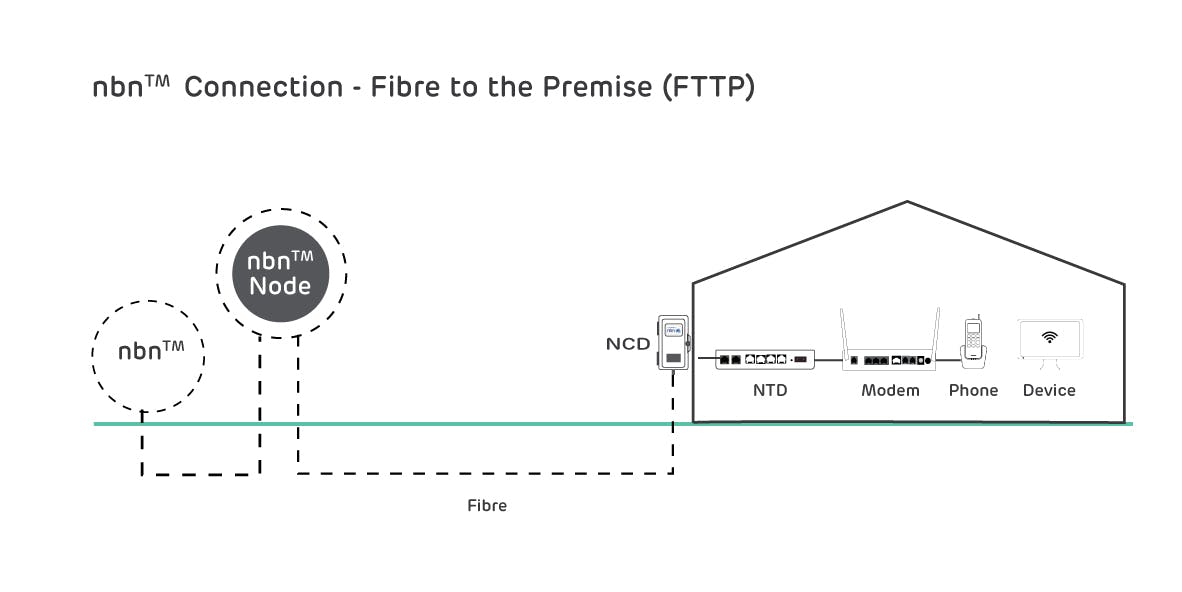
Fibre to the Premises uses the fibre-optic line from the street and connects to an nbn connection box at your premises. Your modem then connects to the nbn connection box via an ethernet cable. Once your modem is connected to the nbn network, you may connect your devices via Wi-Fi or ethernet cable.
Fixed Wireless (FW)
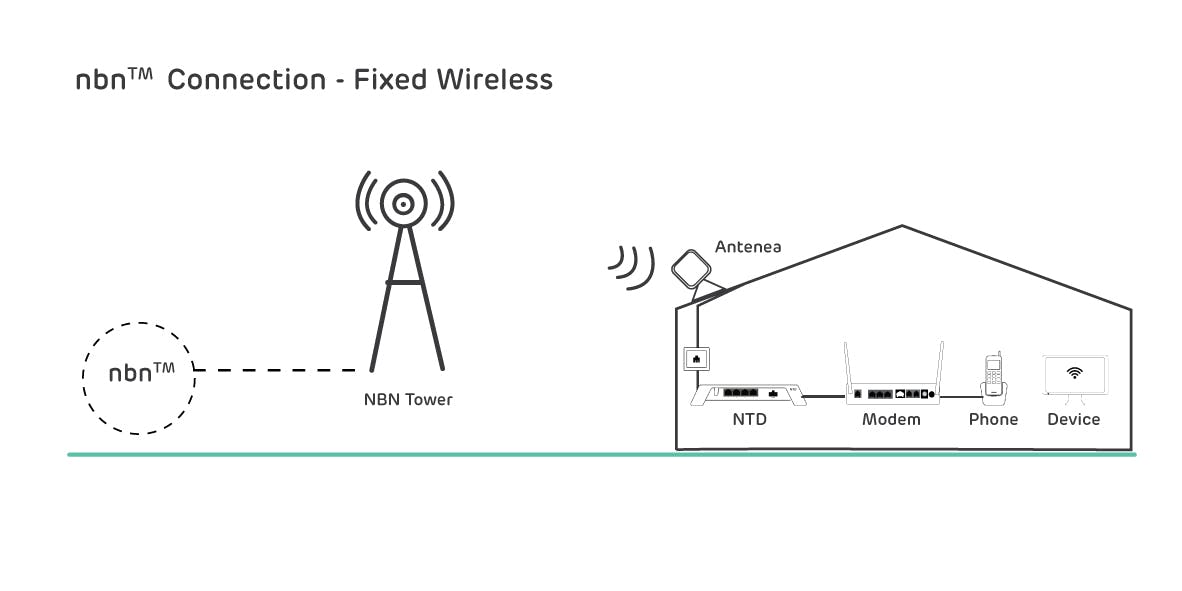
Fixed Wireless connects from a transmissions tower to an antenna on top of your roof, which is installed by an nbn technician. The antenna then connects to an nbn connection box at your premises. Your modem then connects to the nbn connection box via an ethernet cable. Once your modem is connected to the nbn network, you may connect your devices via Wi-Fi or ethernet cable.
Fibre to the Node (FTTN)
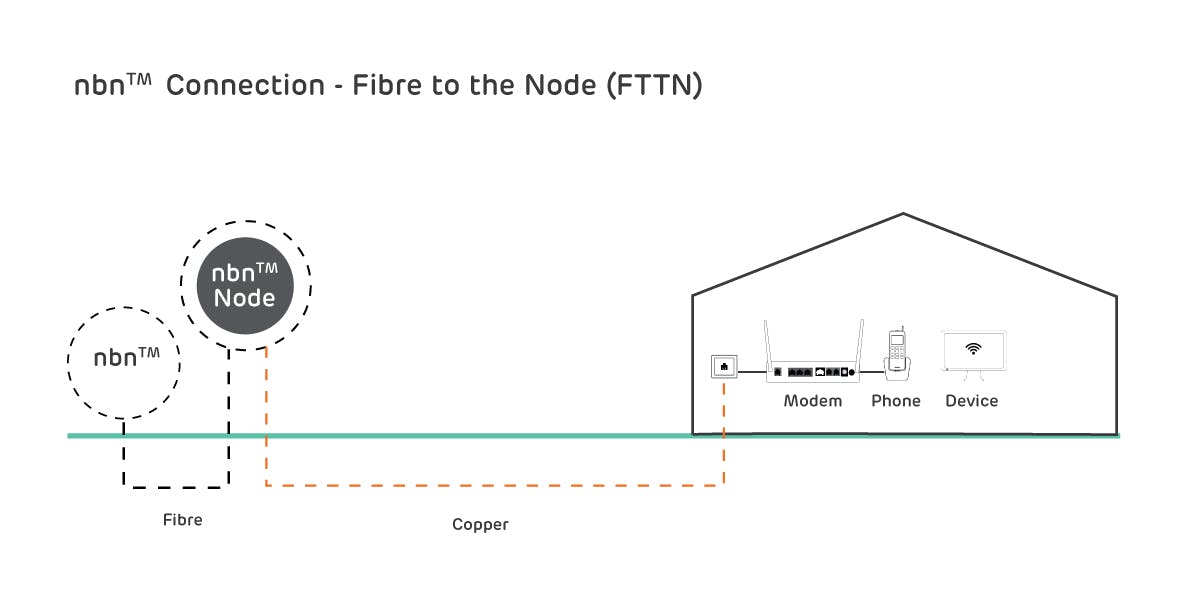
Fibre to the Node connects the existing copper phone and internet lines from your premises to a nearby fibre node in the street. You then just connect your modem to the existing phone socket in your premises. Once your modem is connected to the nbn network, you may connect your devices via Wi-Fi or ethernet cable.
Fibre to the Building (FTTB
An nbn Fibre to the Building (FTTB) connection is generally used when connecting an apartment block or similar types of buildings to the nbn network. In this scenario a fibre optic line is run to the fibre node in the building’s communications room. Then the existing technology in the building is used to connect each apartment.
Fibre to the Curb (FTTC)
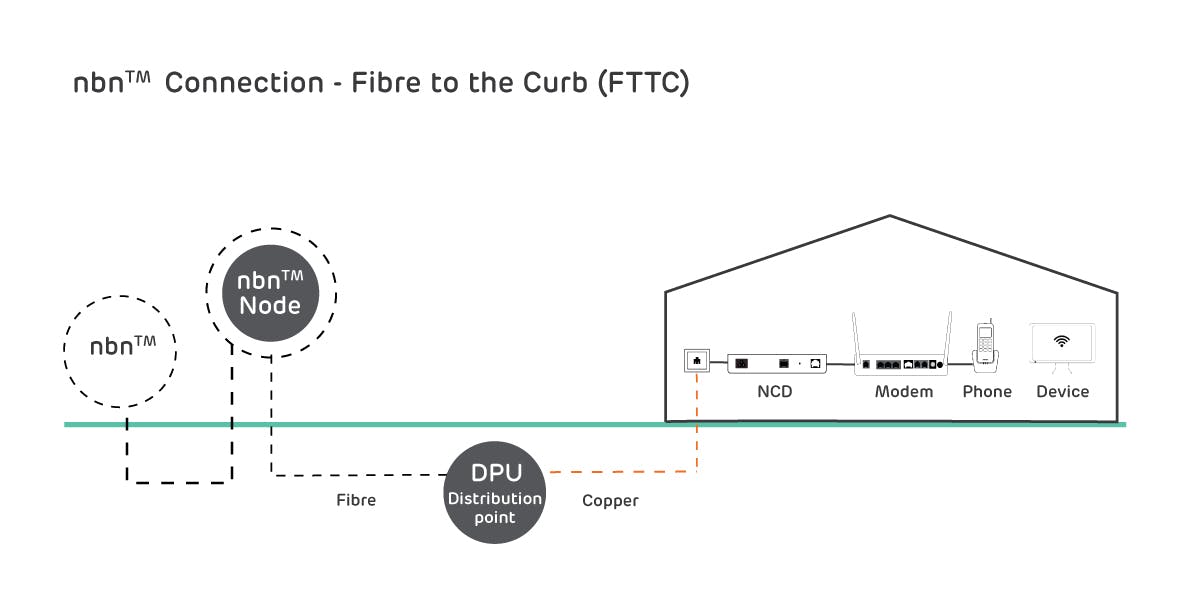
Fibre to the Curb connects the existing copper phone and internet lines from your premises to a small node located inside a pit on the street. An FTTC nbn connection device will be installed inside your premises and will be the end receiver, where you can connect your modem. Once your modem is connected to the nbn network, you may connect your devices via Wi-Fi or ethernet cable.
Satellite (Sky Muster® Plus)
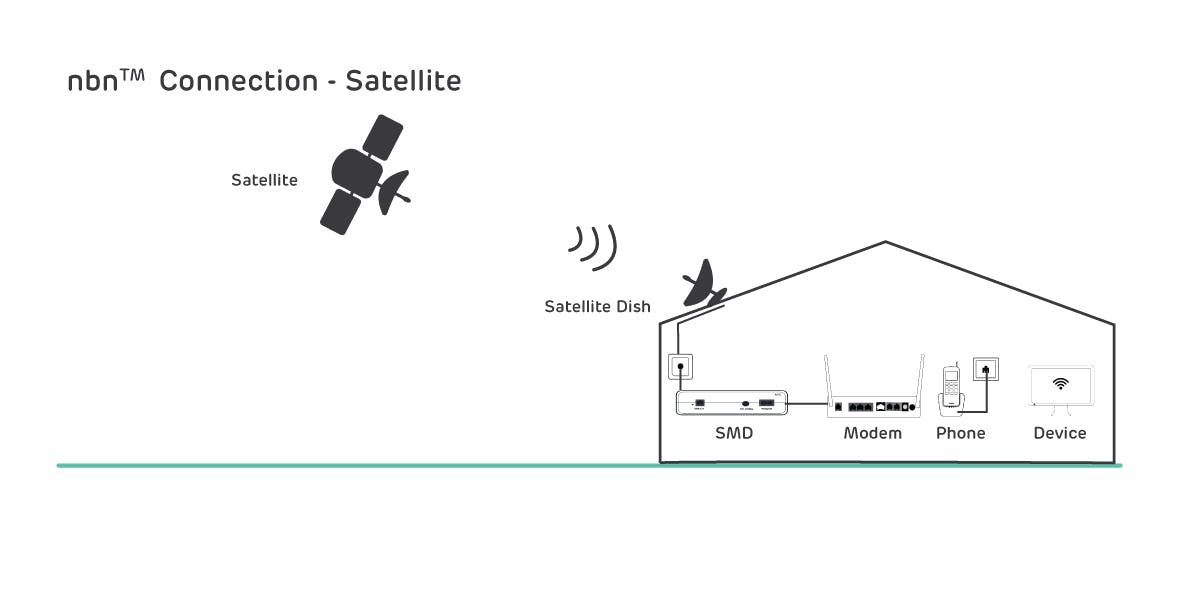
The Sky Muster® Plus Premium satellite connects via a satellite dish on top of your roof, which is installed by an nbn technician. The satellite dish then connects to an nbn supplied modem that is connected to a point where the cable from the satellite dish enters your home. Once your modem is connected to the nbn network, you may connect your devices via Wi-Fi or ethernet cable.
Your home phone connects to your phone socket and runs off the existing copper phone lines, just like it did before.
Hybrid Fibre-Coaxial (HFC)
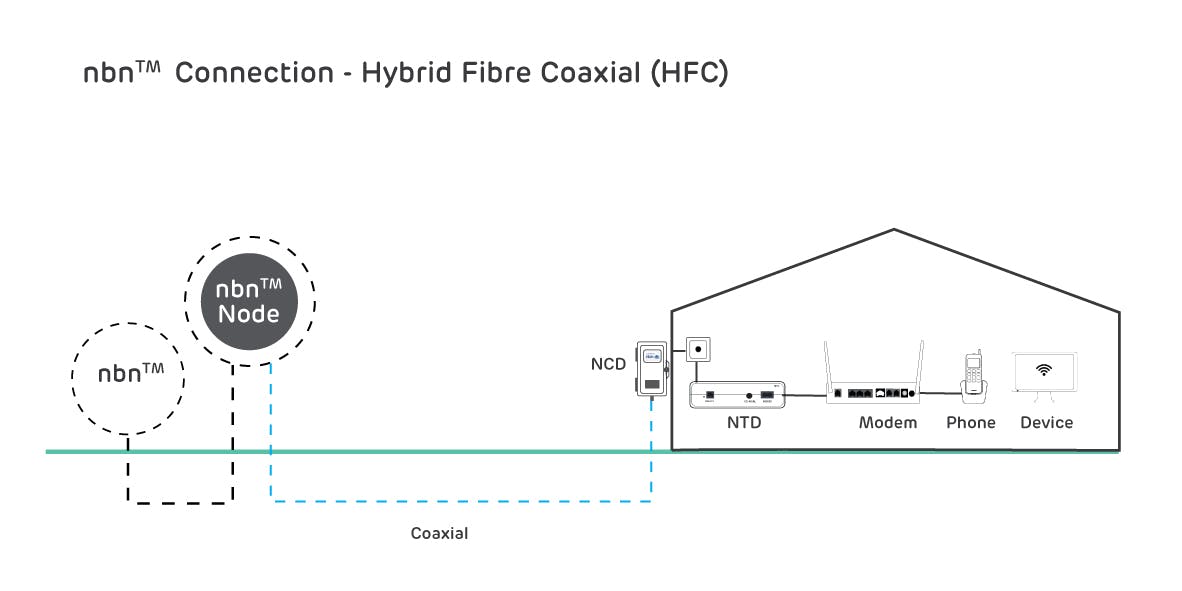
A Hybrid Fibre Coaxial (HFC) connection is used in circumstances where the existing ‘pay TV’ or cable network can be used to make the final part of the nbn connection. In this circumstance, an HFC line will run from the nearest available fibre node to your premises.
HFC connections require an nbn connection box to be installed at the point where the line enters your home, where you can then connect your modem via ethernet cable. Once your modem is connected to the nbn network, you may connect your devices via Wi-Fi or ethernet cable.
Are you ready to connect?
If you’re ready to connect to the nbn network there is no time like the present! For an award-winning Australian customer service, Southern Phone is here every step of the way.